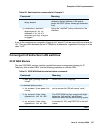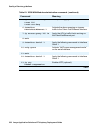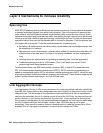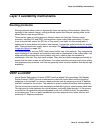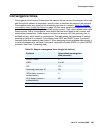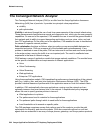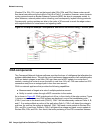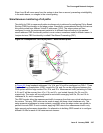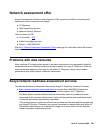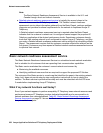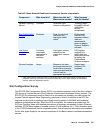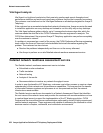
The Converged Network Analyzer
Issue 6 January 2008 345
such as Extreme Networks (http://www.extremenetworks.com/homepage.asp). Test agents are
also available in low cost devices that can be deployed standalone. Test agents help
complement server measurements in two ways: they allow end to end measurement to be
performed between specific points of interest (such as phones, gateways, or video conferencing
end points); and they provide a view of network impairments over a full mesh of paths between
the various sites of an enterprise.
The visibility and path optimization value propositions provided by CNA are instrumental to IP
Telephony. VoIP is a real time application with stringent requirements: delay, loss, and jitter
effects over the network can affect voice traffic and destroy the user experience. CNA can
provide both visibility into such network impairments and means to troubleshoot their cause.
Using the CNA Voice application model, network measurements can be translated into an
application score that describes the ability of the network fabric to support the IPT application.
The Application Score uses a 0 to 5 scale, and can easily be interpreted by IT experts and
executives alike. Using the CNA path optimization capabilities, the user can dramatically reduce
the effect of network impairments on the voice application running over the network; hence
significantly improve the voice communication experience. Finally, CNA can enable
IT personnel to specify precise policies that describe the preferred links for voice traffic to use,
thresholds on the quality of the voice experience, and load thresholds over given links that need
not be exceeded.
Using the embedded test agents in Avaya phones can significantly augment the value that can
be obtained from a CNA deployment. Embedded test agents in end points would allow those
end points to measure between each other, hence providing the CNA server with the specific
view of the network performance between them. The test agent is embedded in Avaya phones
and gateways today. The test agent is also embedded in Extreme Networks products that are
GA today: the Summit X450, the BlackDiamond 8800, and the BlackDiamond 10808 switches
(http://www.extremenetworks.com/products
).
CNA path optimization can also be used to protect signaling traffic. In a typical enterprise, the
communication system comprises gateways deployed in a large portion of the enterprise’s sites
(including many of the small sites) and call controllers running Communication Manager in the
regional sites. Phones in the small sites register with the CLANs on the local gateways’ port
networks; IPSIs on the port networks, in turn, communicate across the WAN with the call
controller through a IPSI connection over what is referred to as a control network. This IPSI
connection is critical, as it allows phones to communicate with the call controller, pass to it
critical stimuli such as depressed digits, access features offered by the call controller, and have
the call controller provide dial tone to the phone. An IPSI connection carries as many links as
there are active phone calls utilizing the connection. Given the critical nature of the IPSI, any
outage in the IPSI connection path can trigger an aggressive recovery mechanism which could
result in intermittent feature loss or dropped calls, depending on the severity of the outage. IPSI
connection loss can be prevented using CNA path optimization.
CNA path optimization requires path diversity, which is a key to WAN resiliency. Through the
provisioning of two or more diverse paths, the enterprise is not at the mercy of failures affecting
one of the paths. For example, consider Figure 93
. Assume that the current connection
between the headquarter and the branch site is through Path A. Assuming that an outage
affects a portion of the path along Path A, then in principle, dynamic routing protocols should
detect the outage and propagate routing updates to the edge routers on the headquarters’ side



